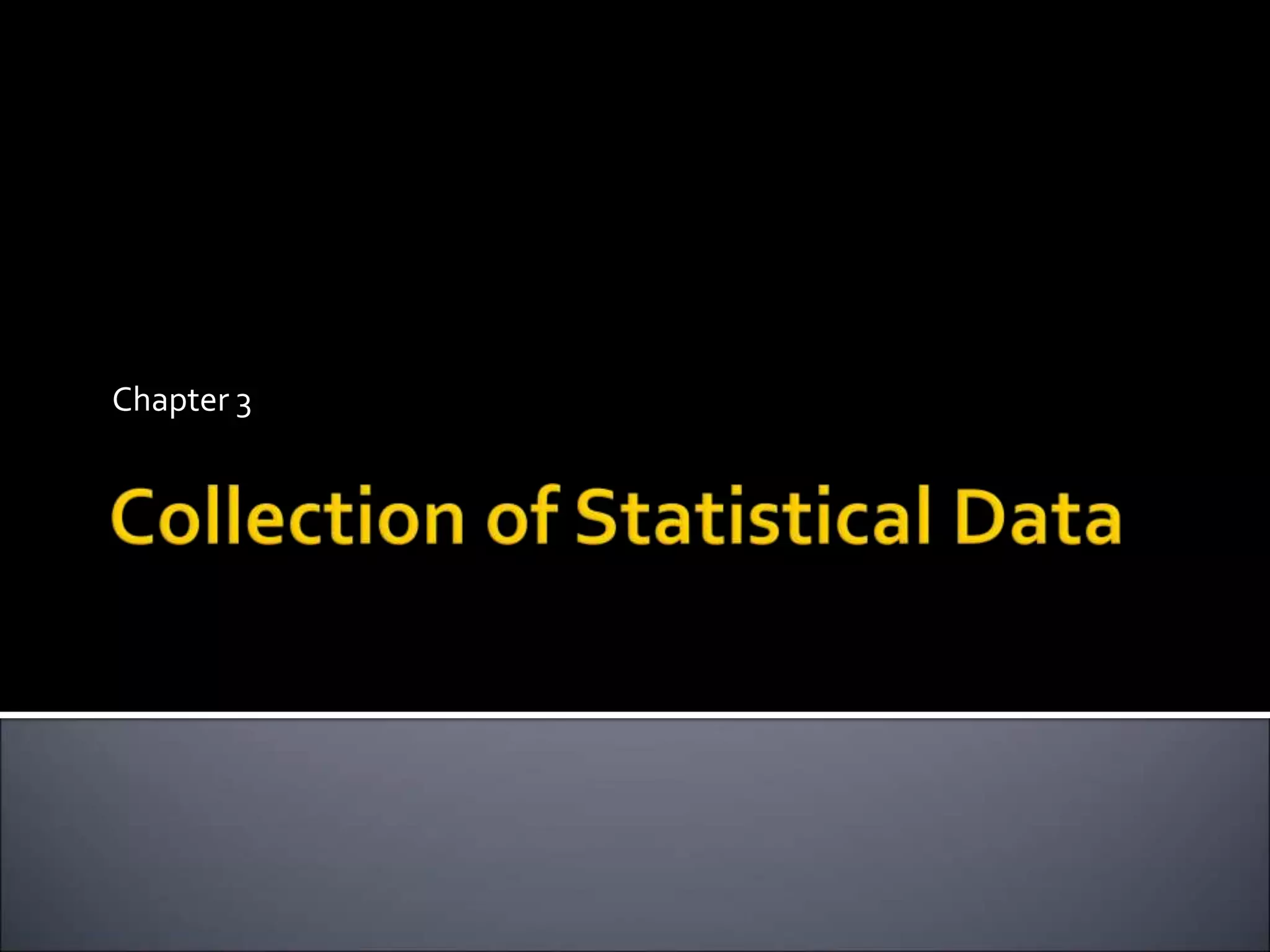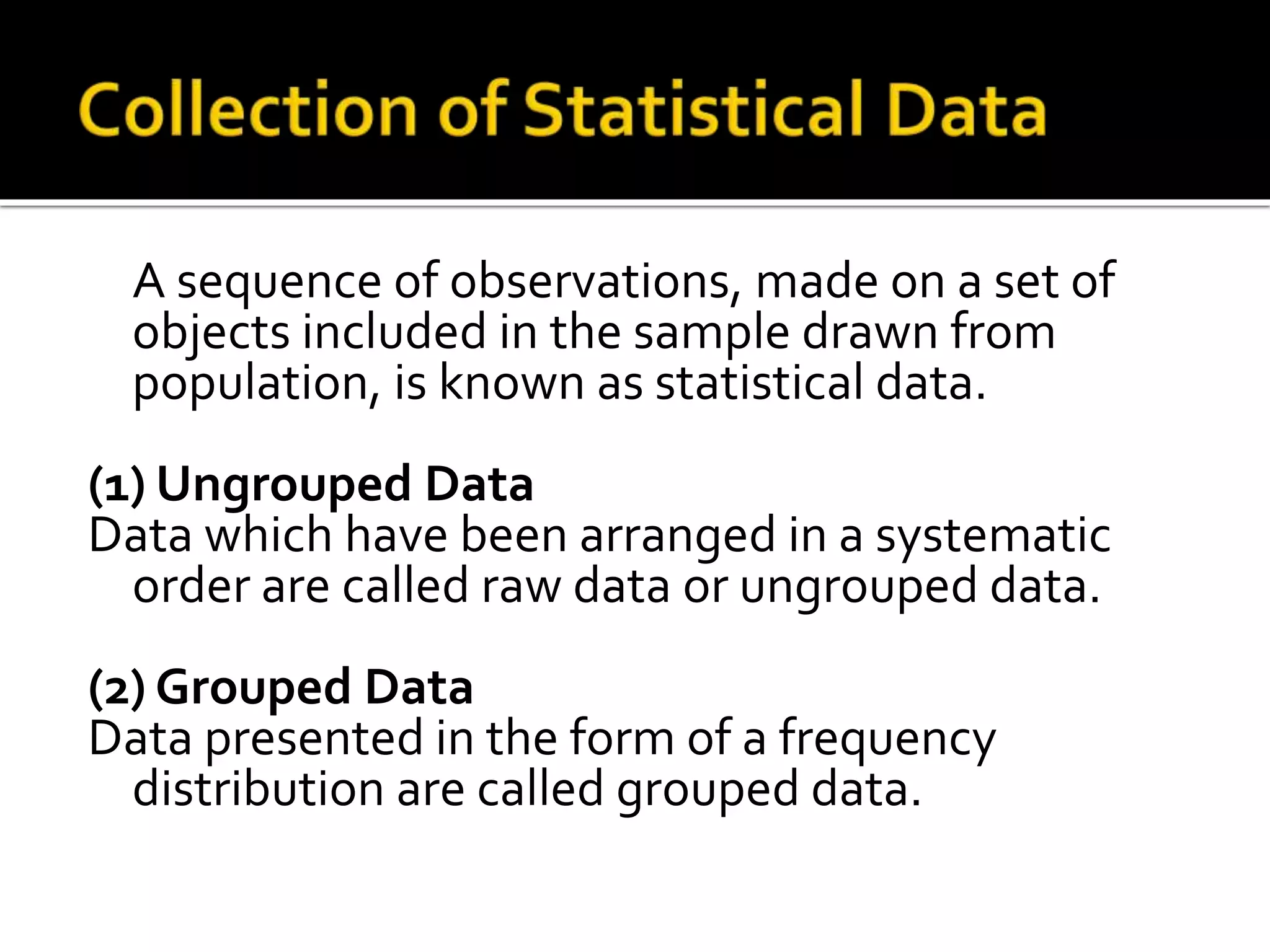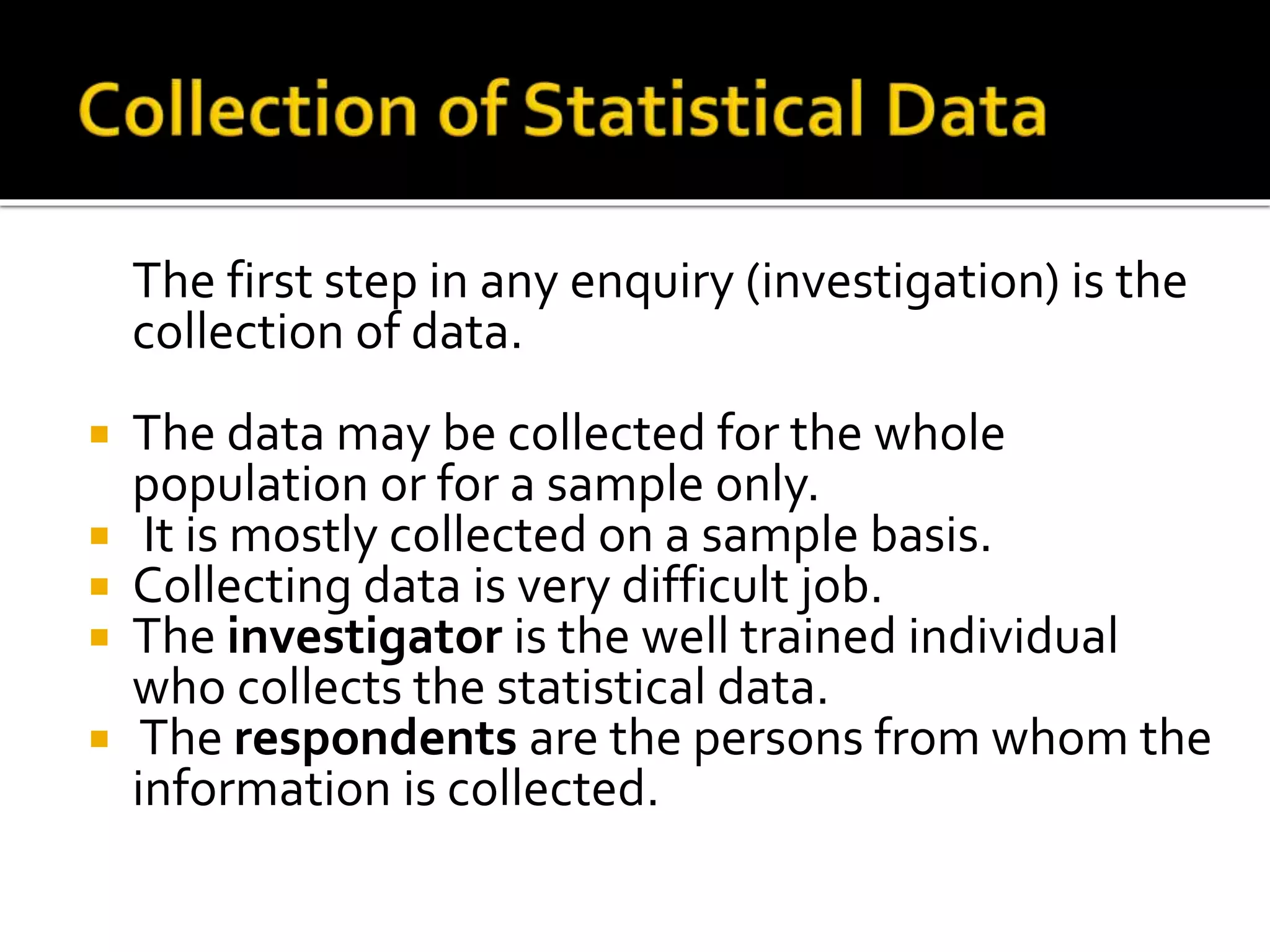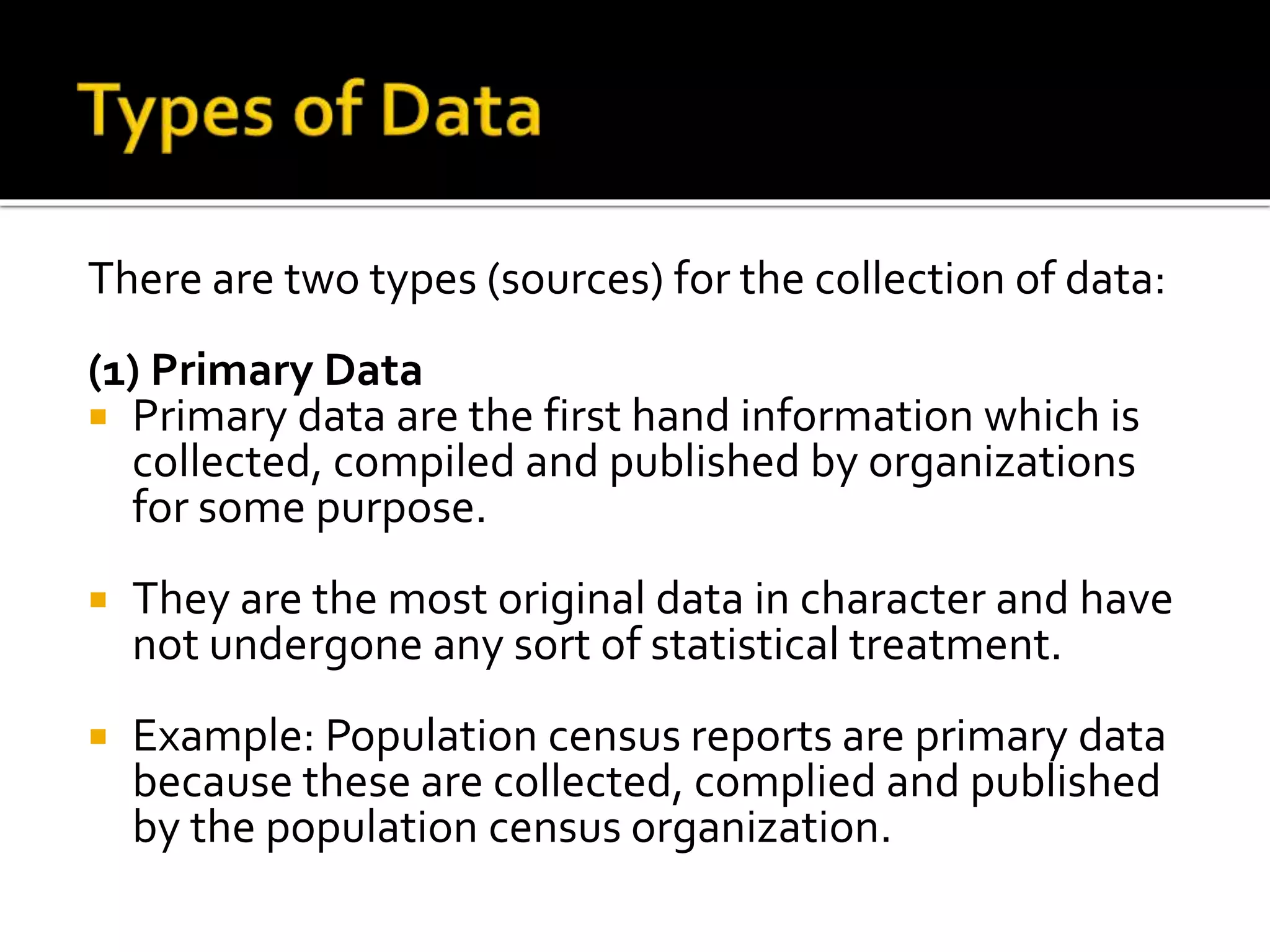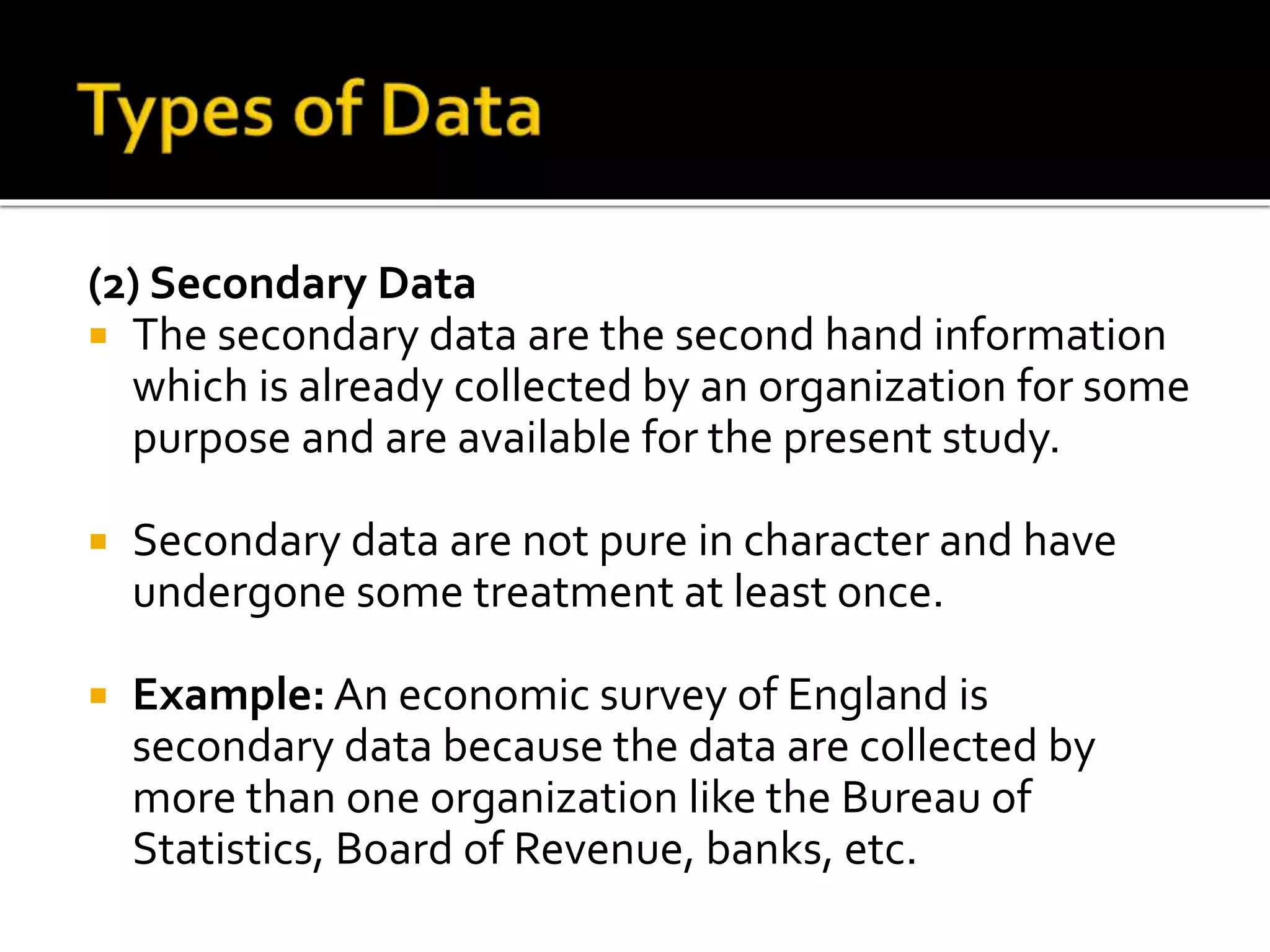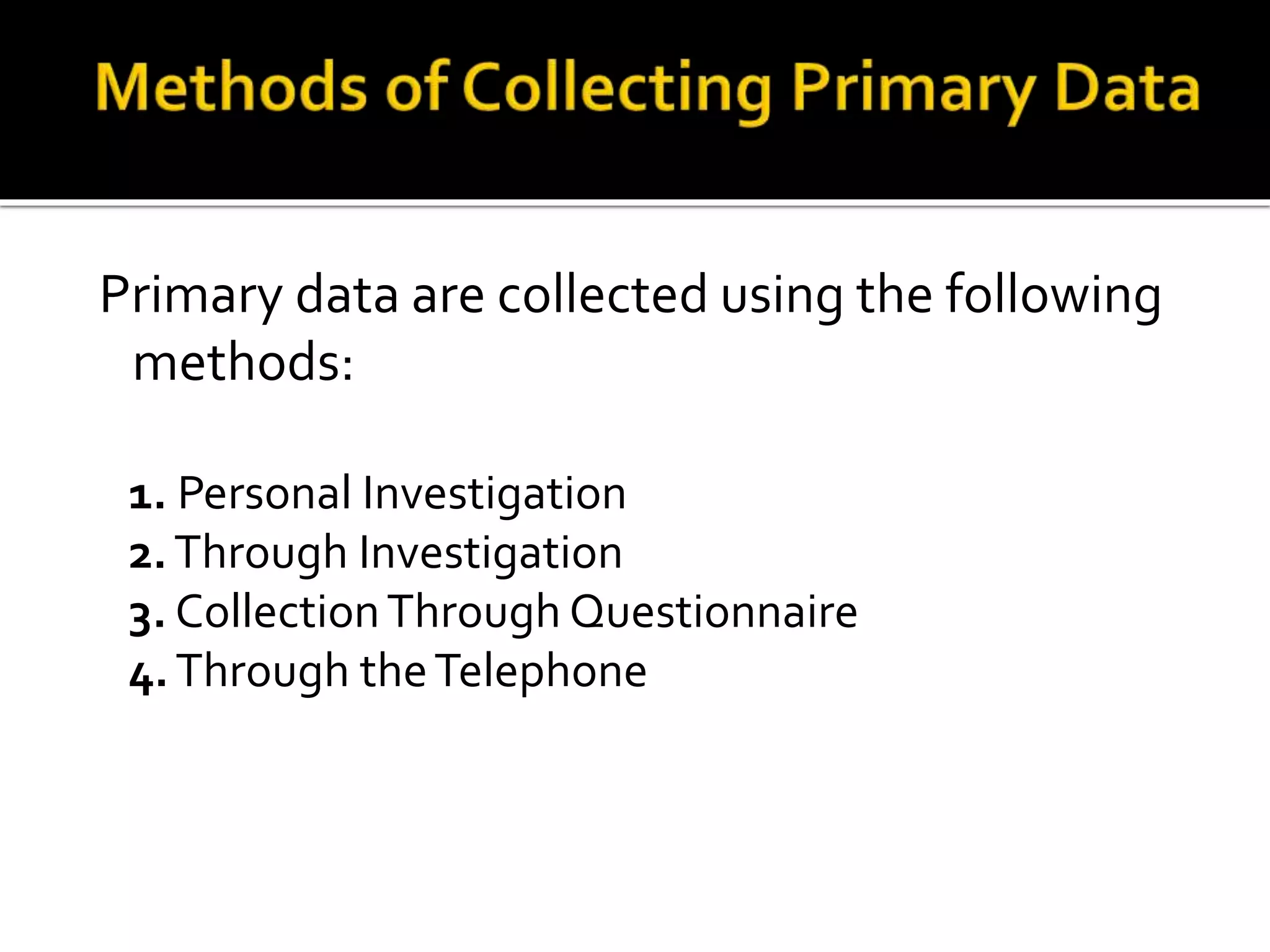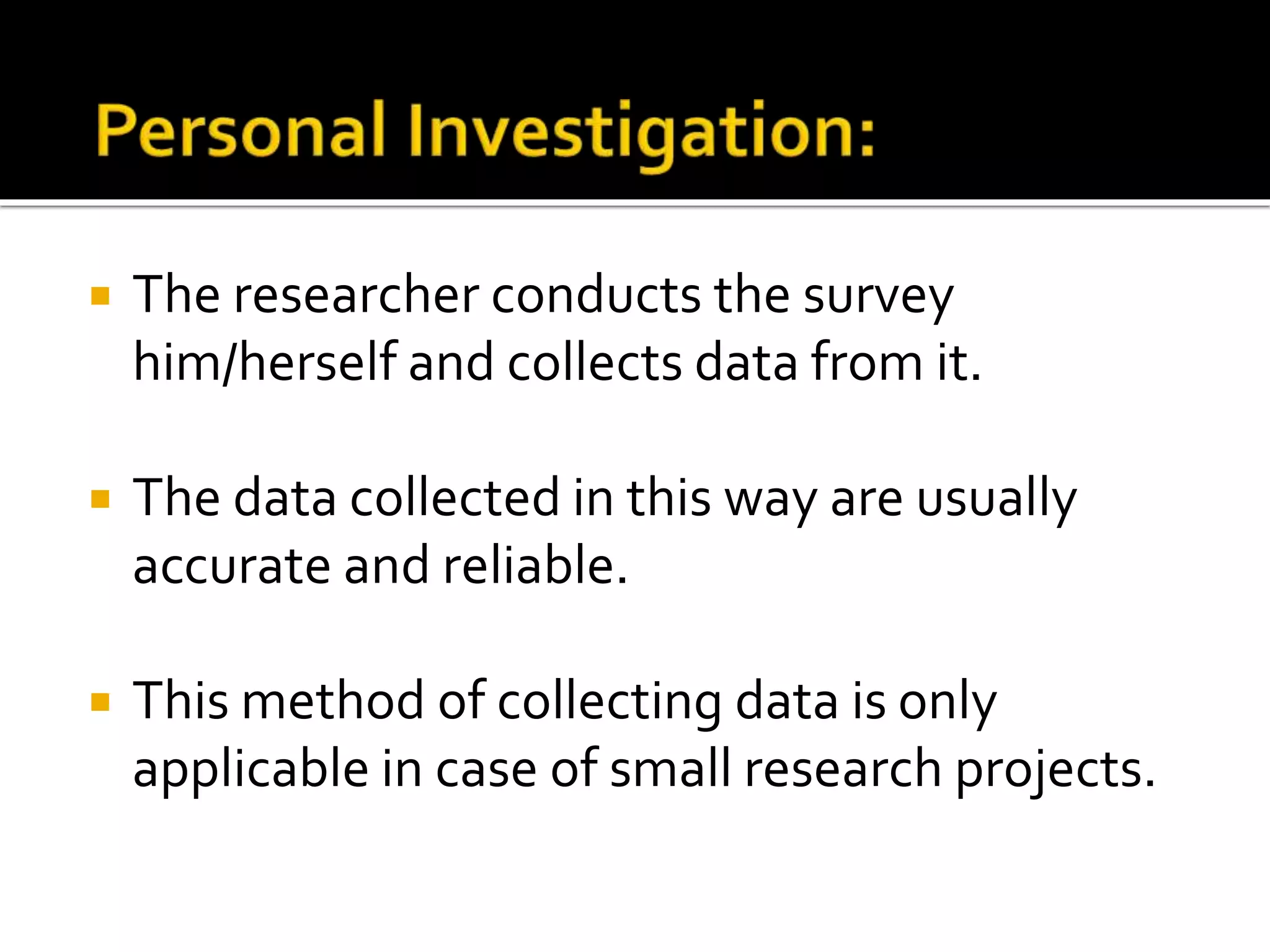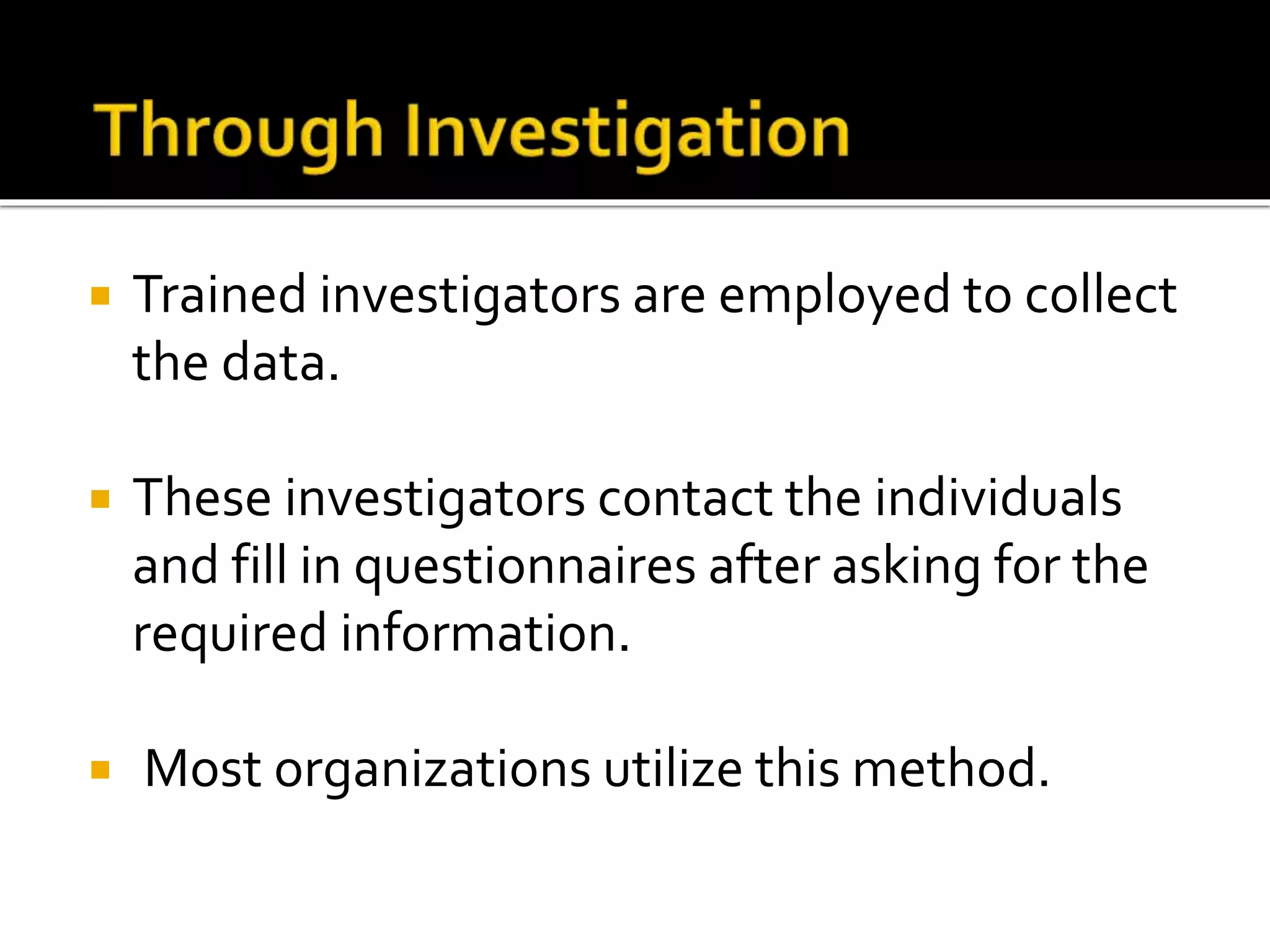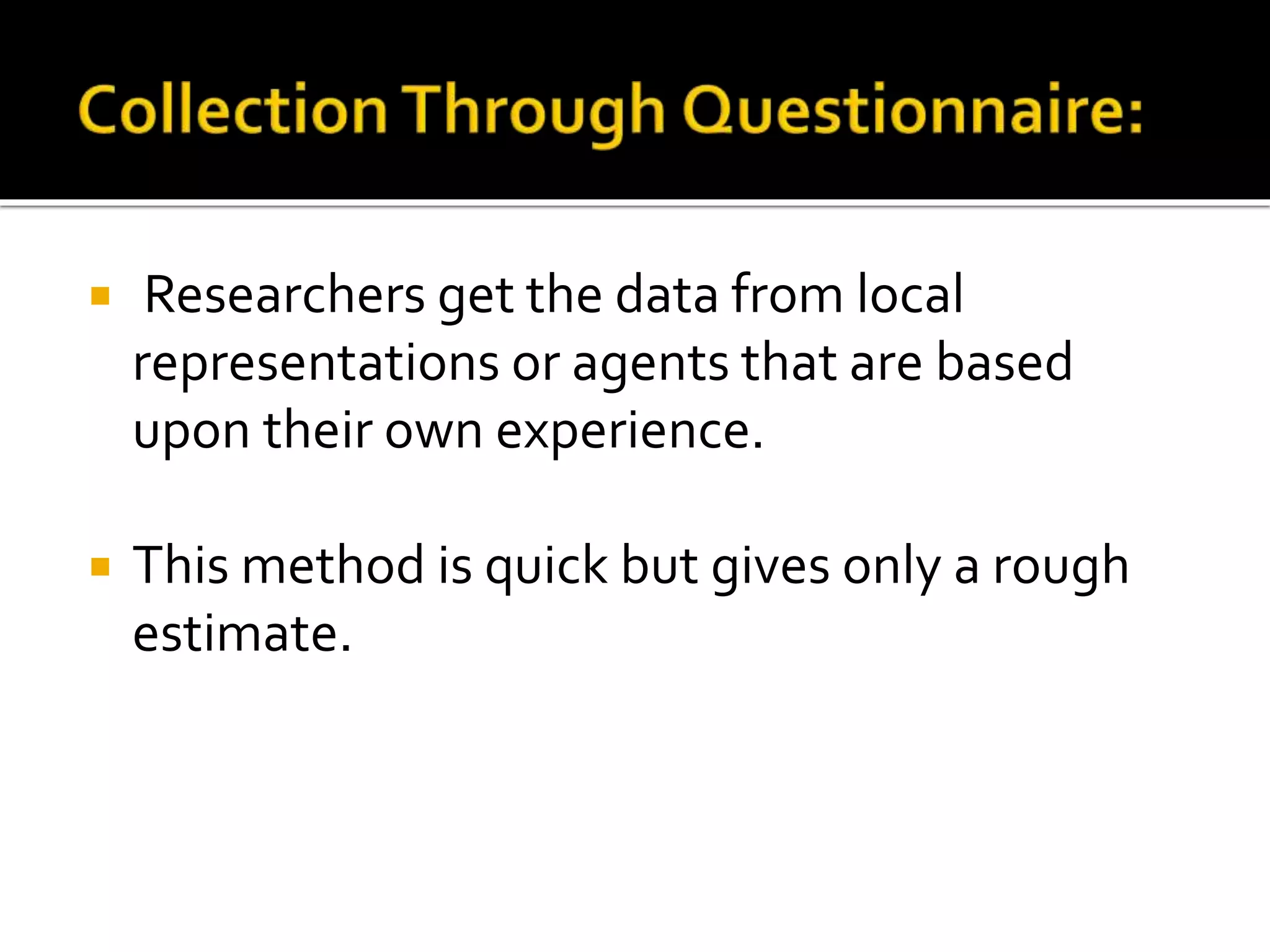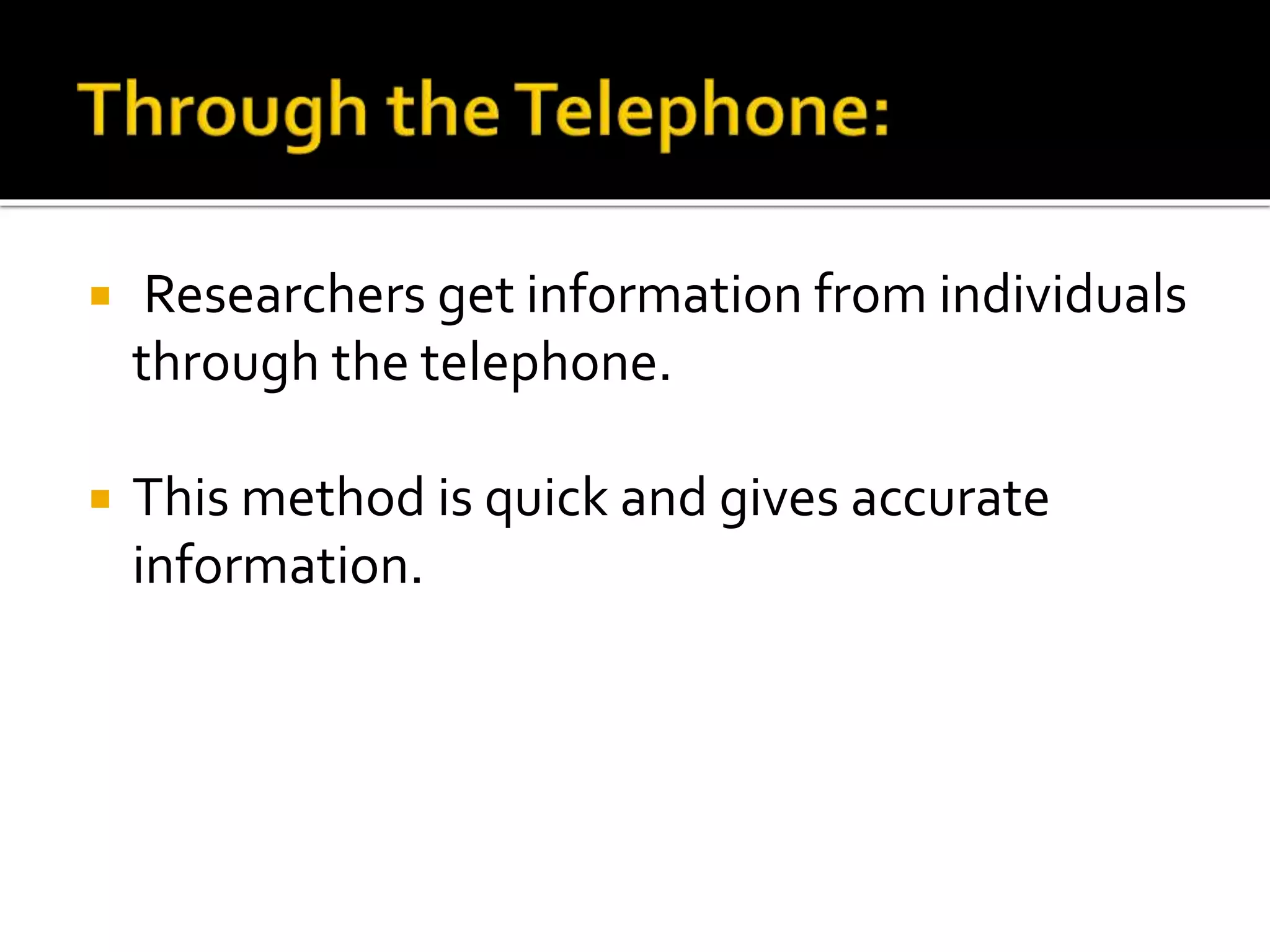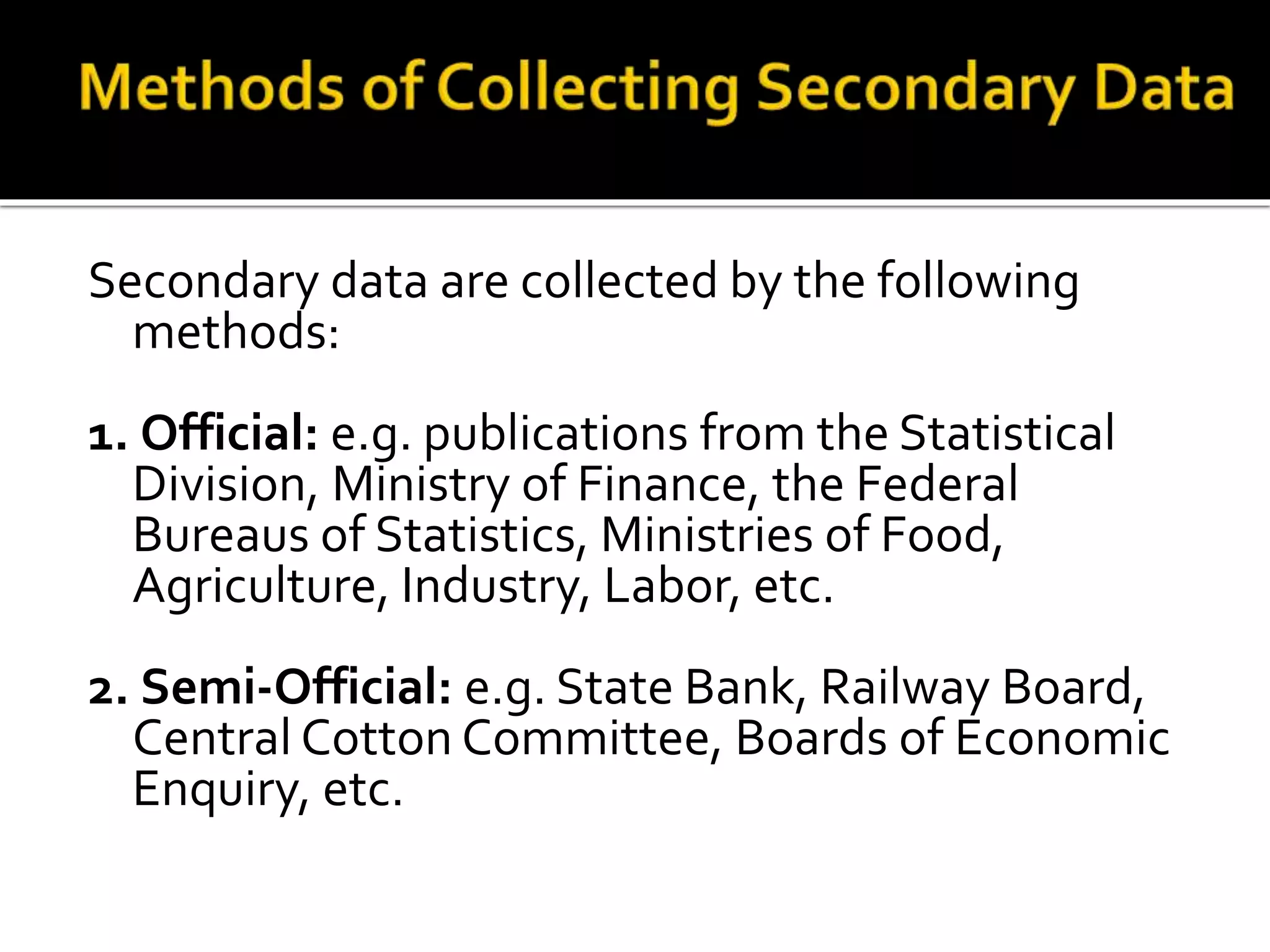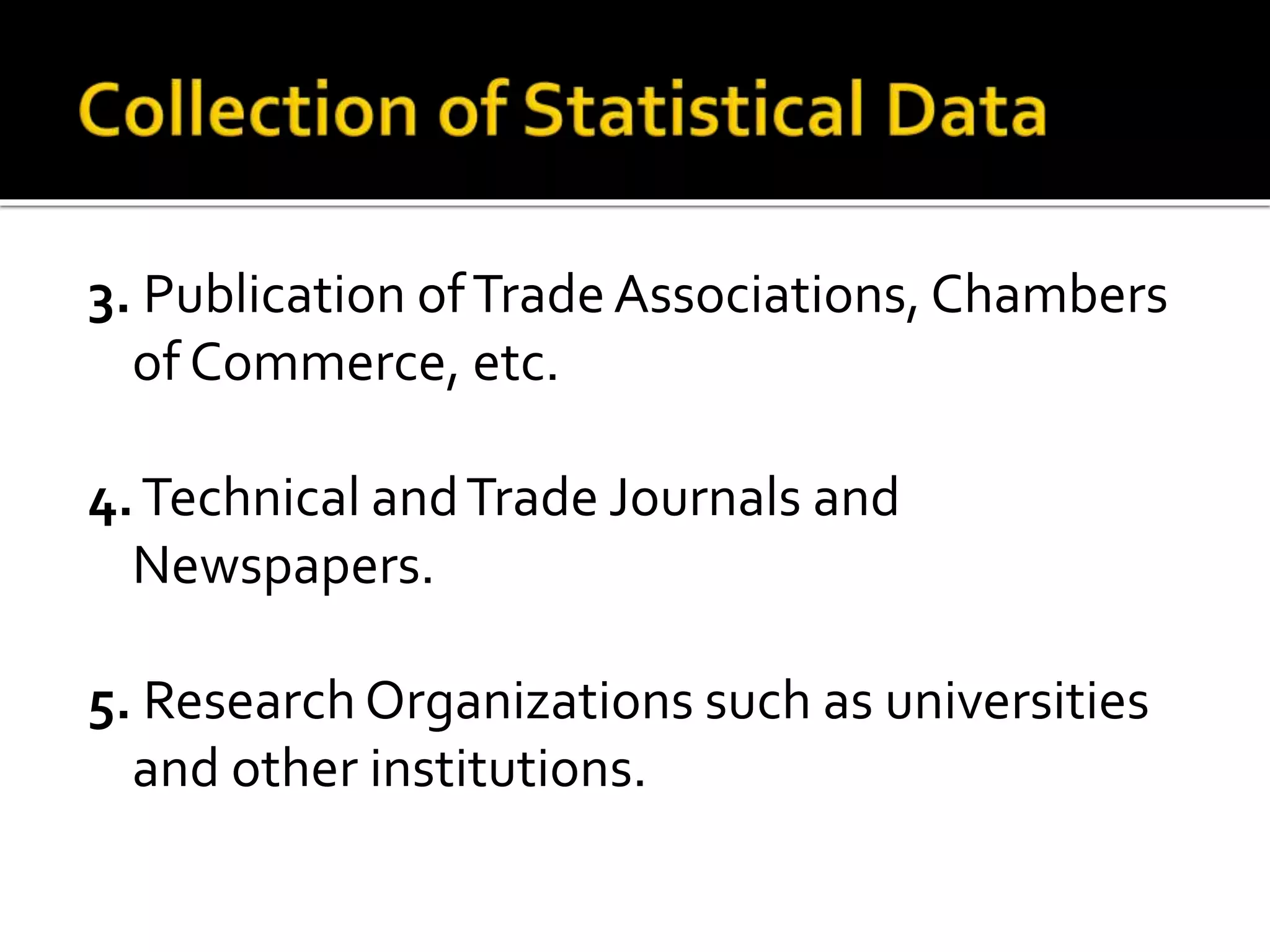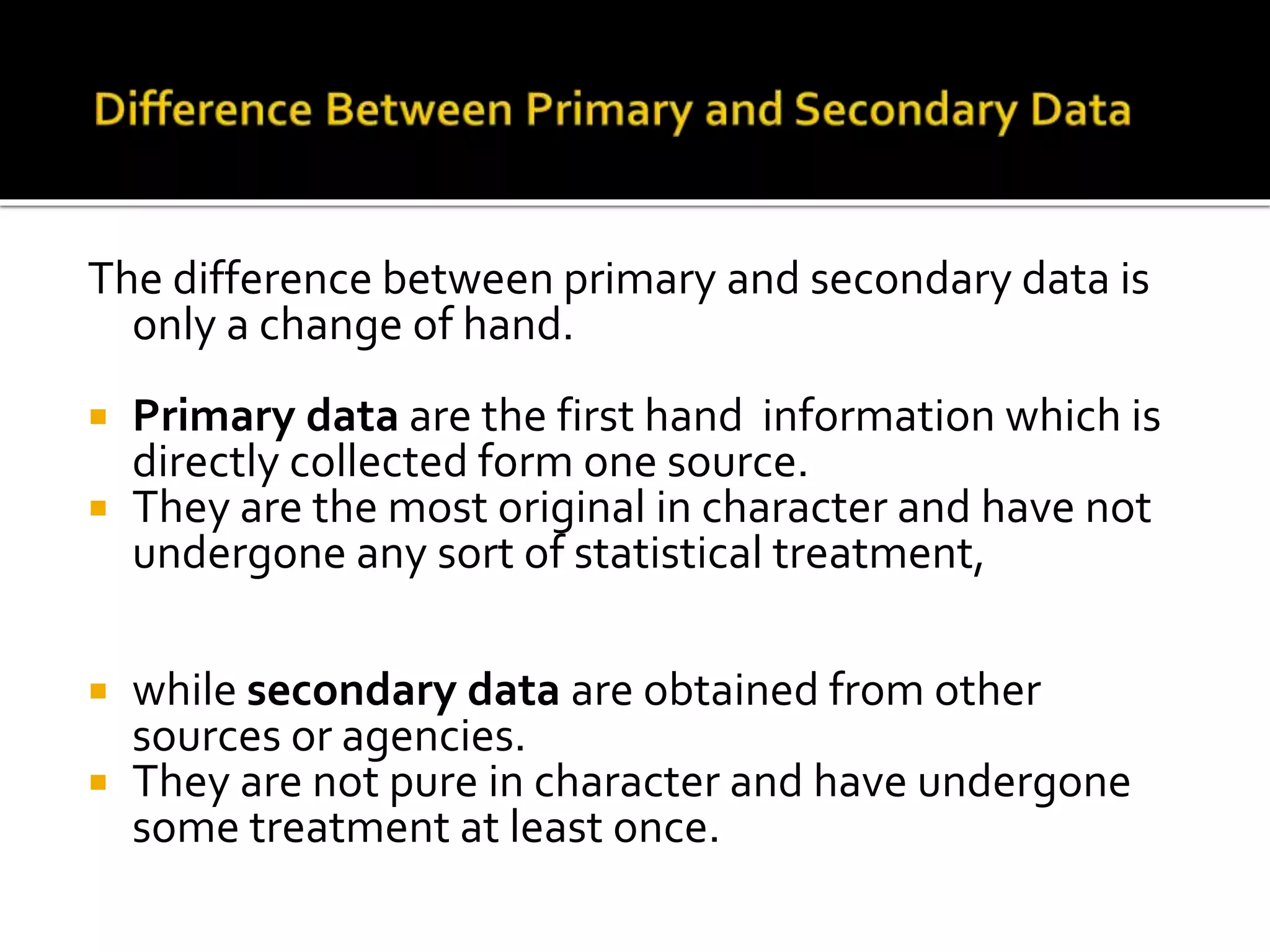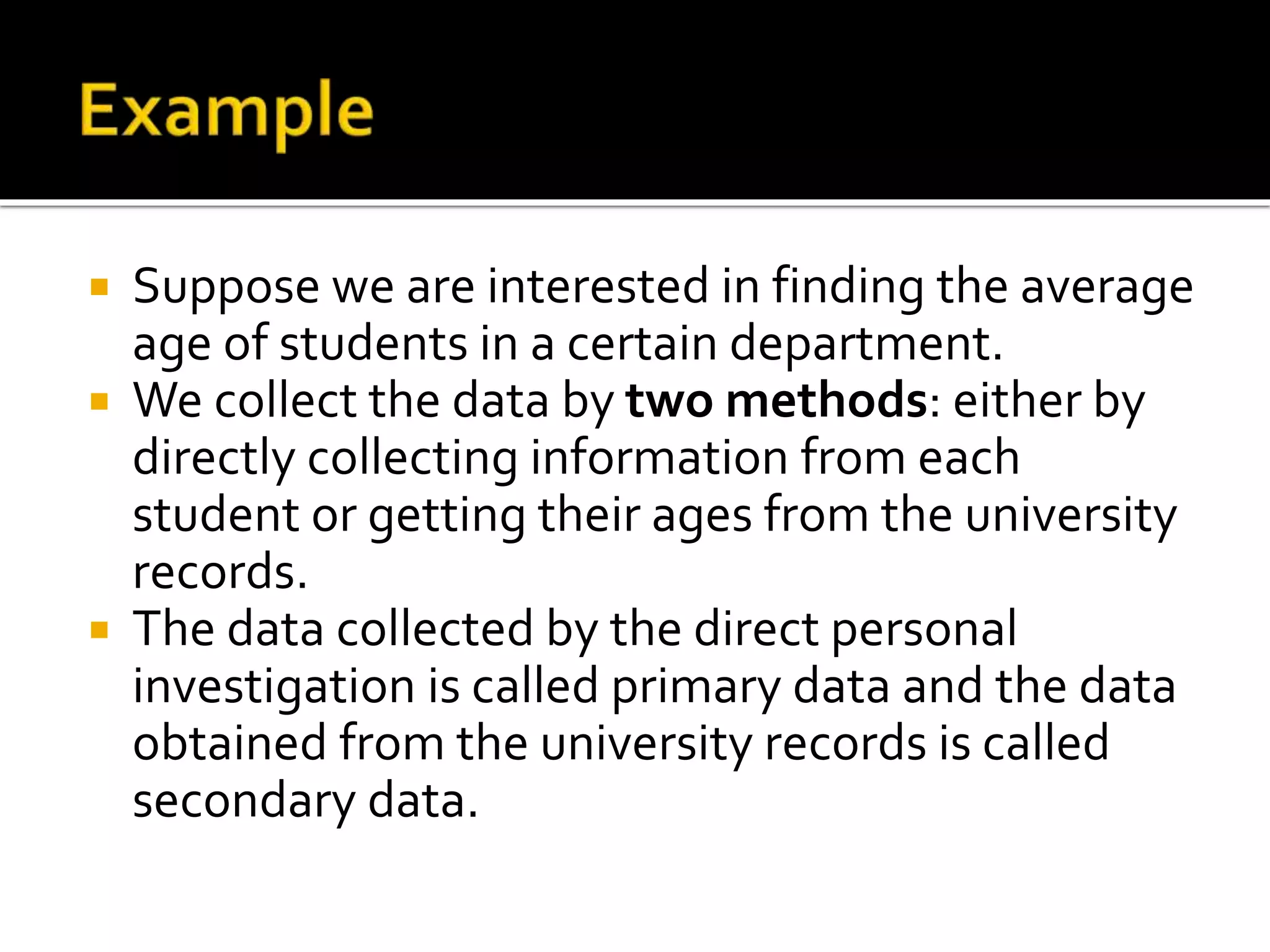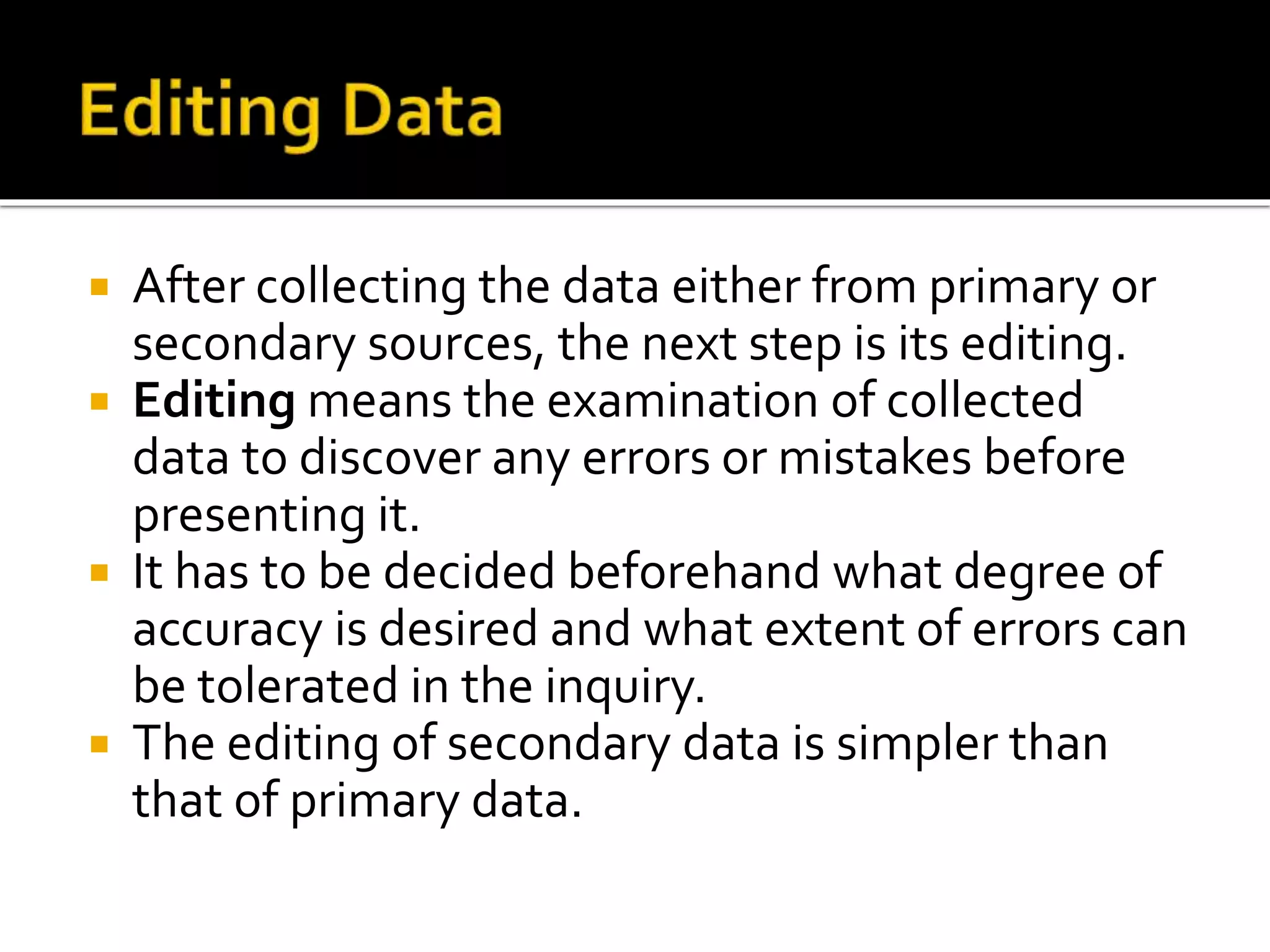This document discusses different types of statistical data and methods for collecting data. It defines ungrouped and grouped data. Primary data is collected directly from original sources while secondary data has already been collected and processed. Common methods for collecting primary data include personal investigation, through investigators using questionnaires, from local representatives, and by telephone. Secondary data can be collected from official publications, semi-official sources, trade associations, research organizations, and other published materials. The key difference is that primary data has not been previously processed while secondary data has undergone some prior treatment.
